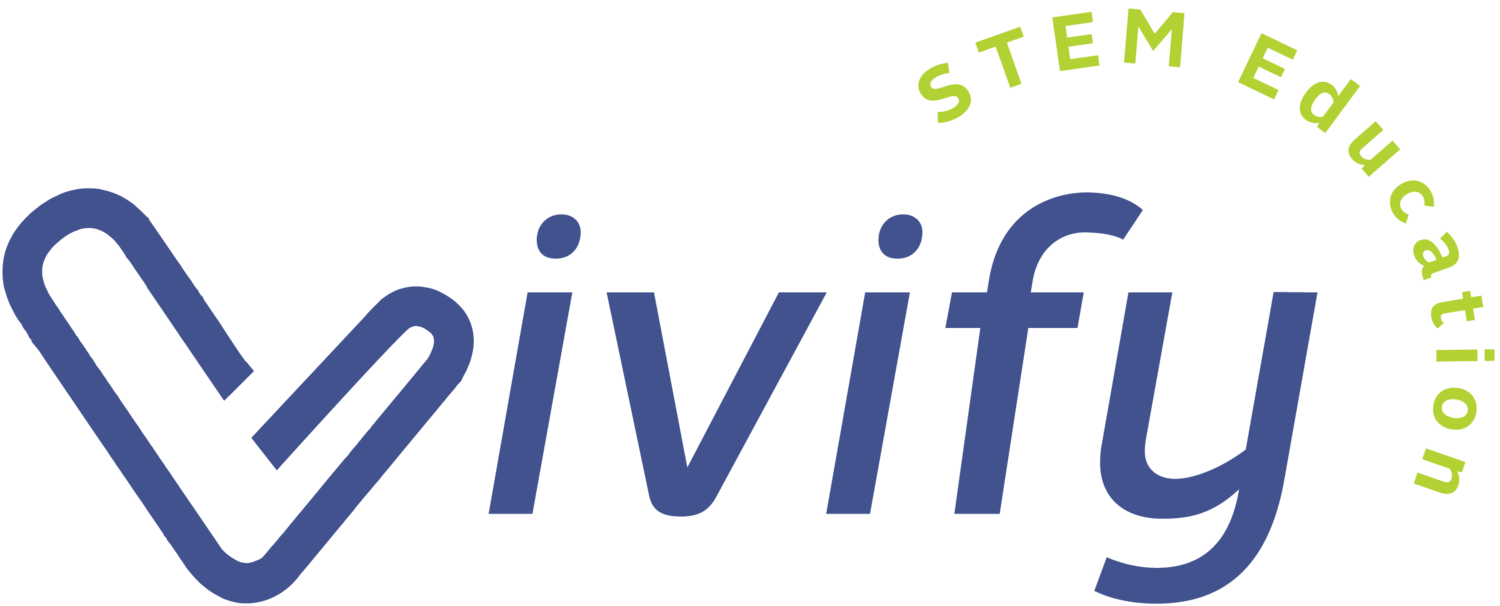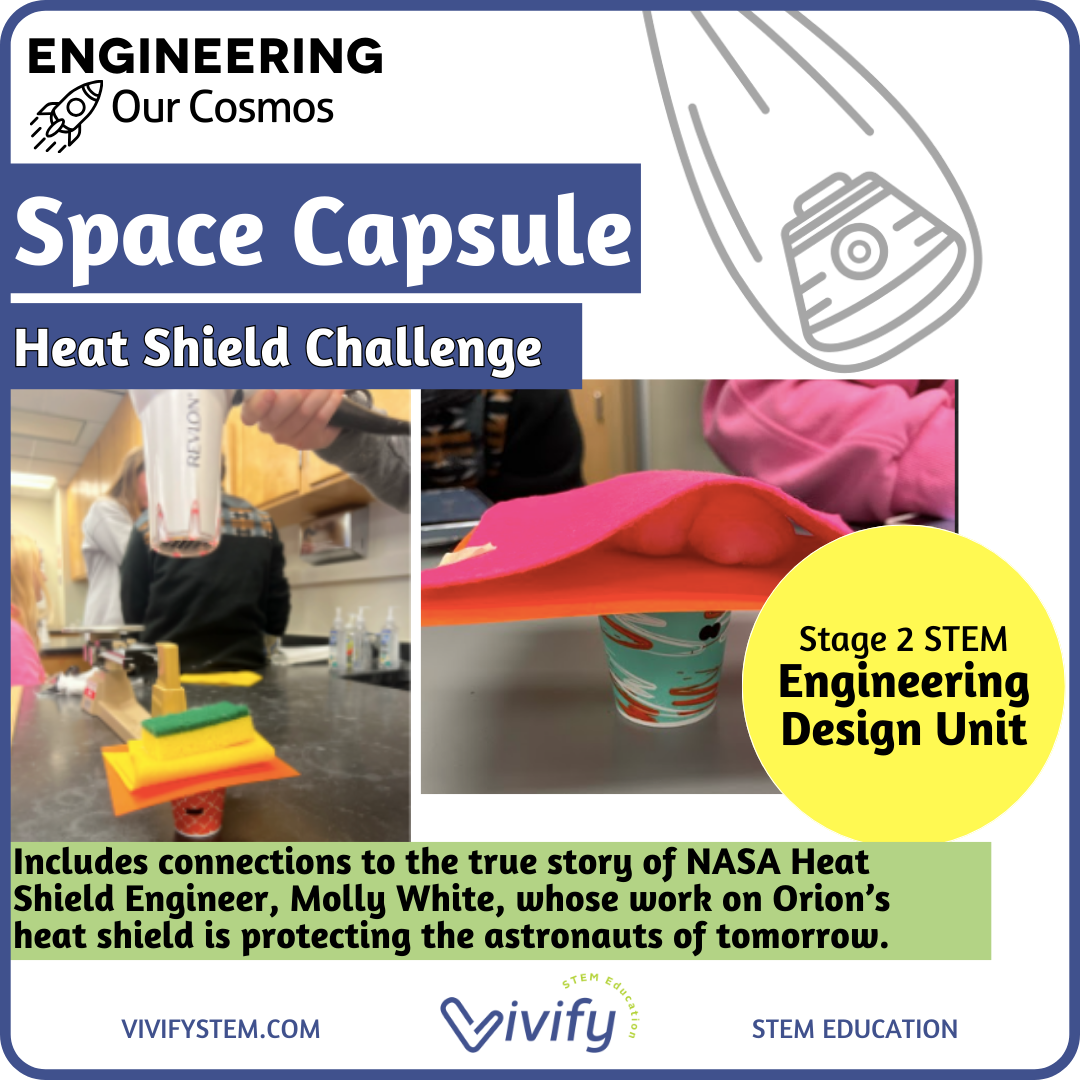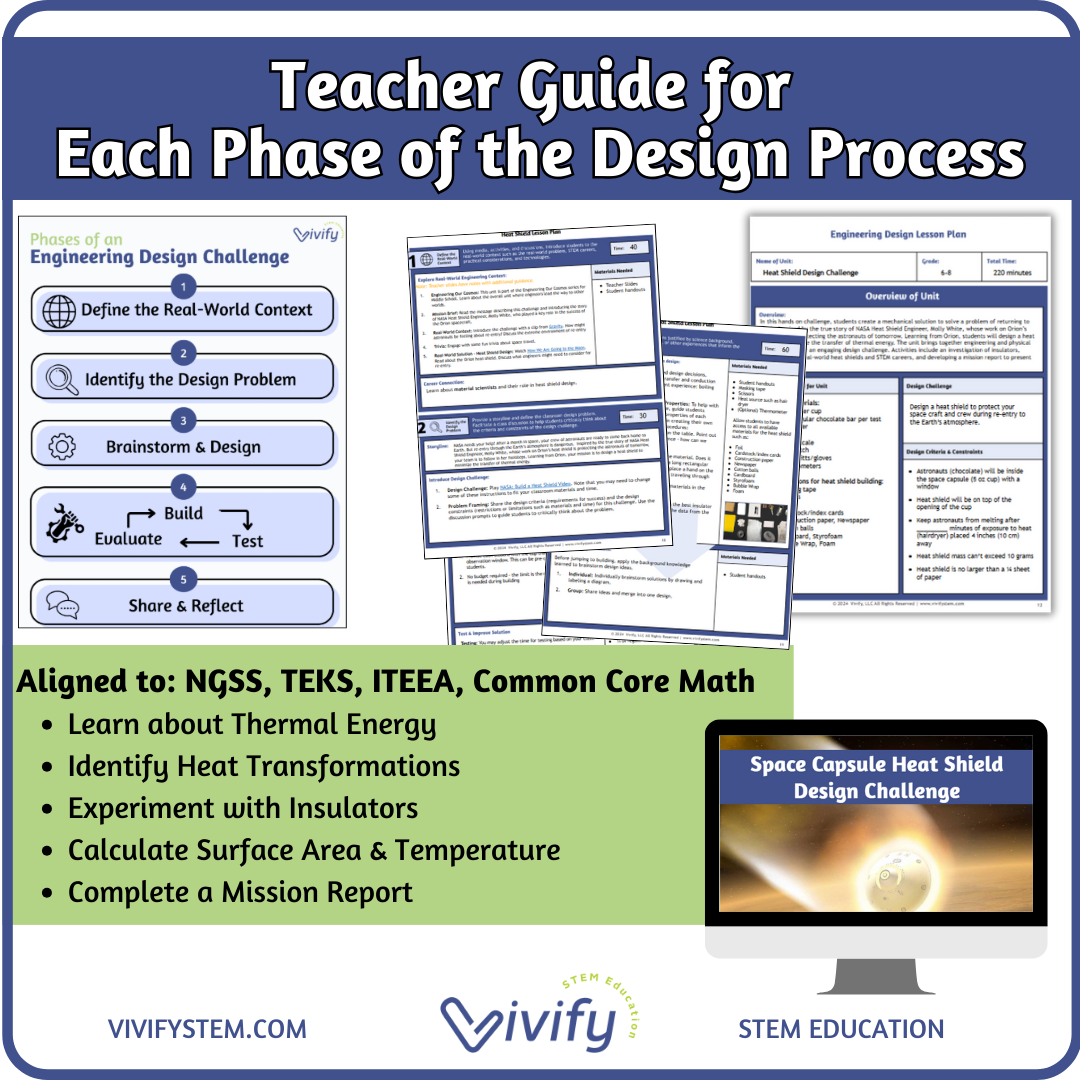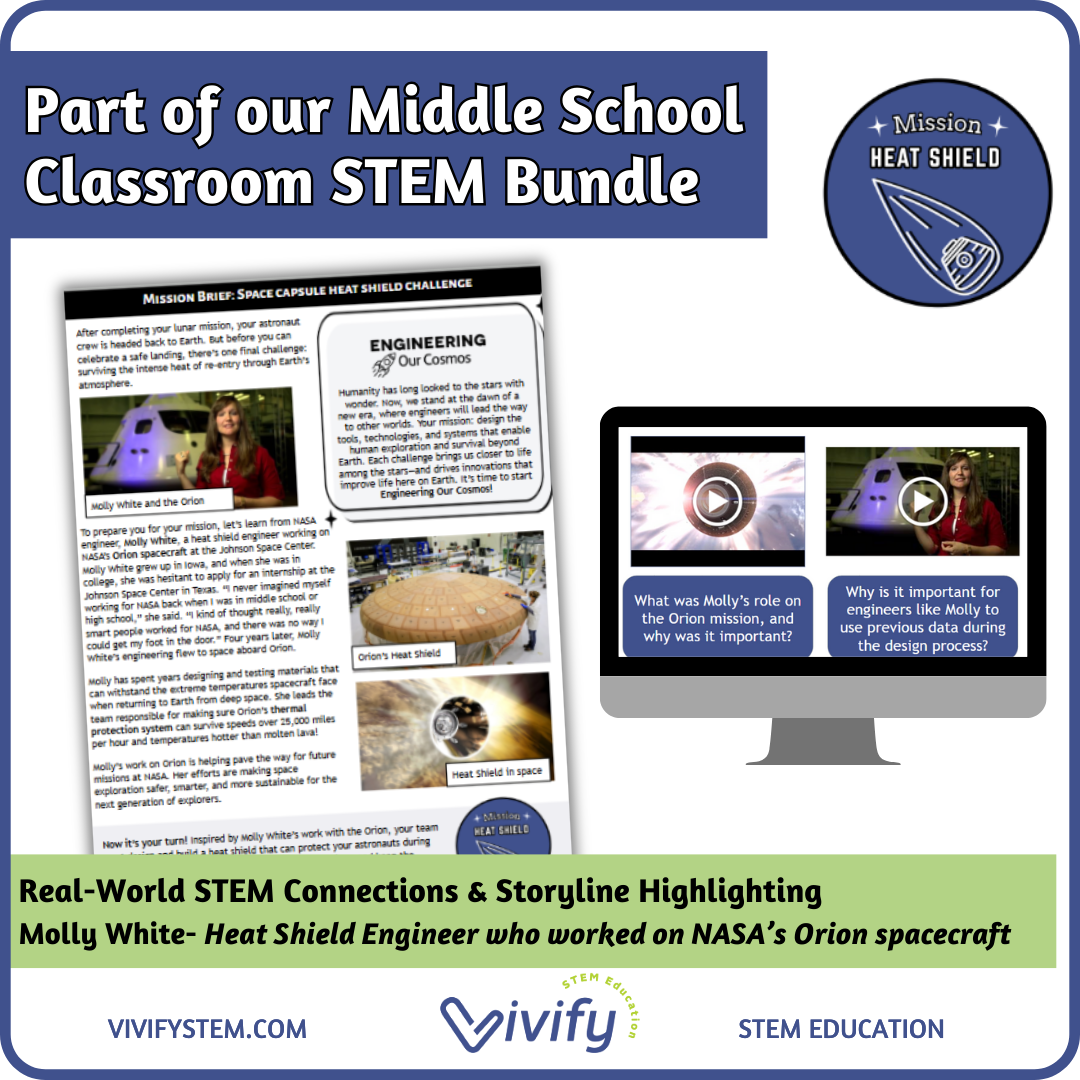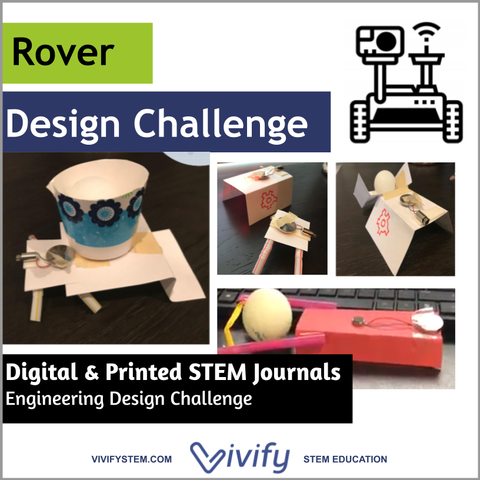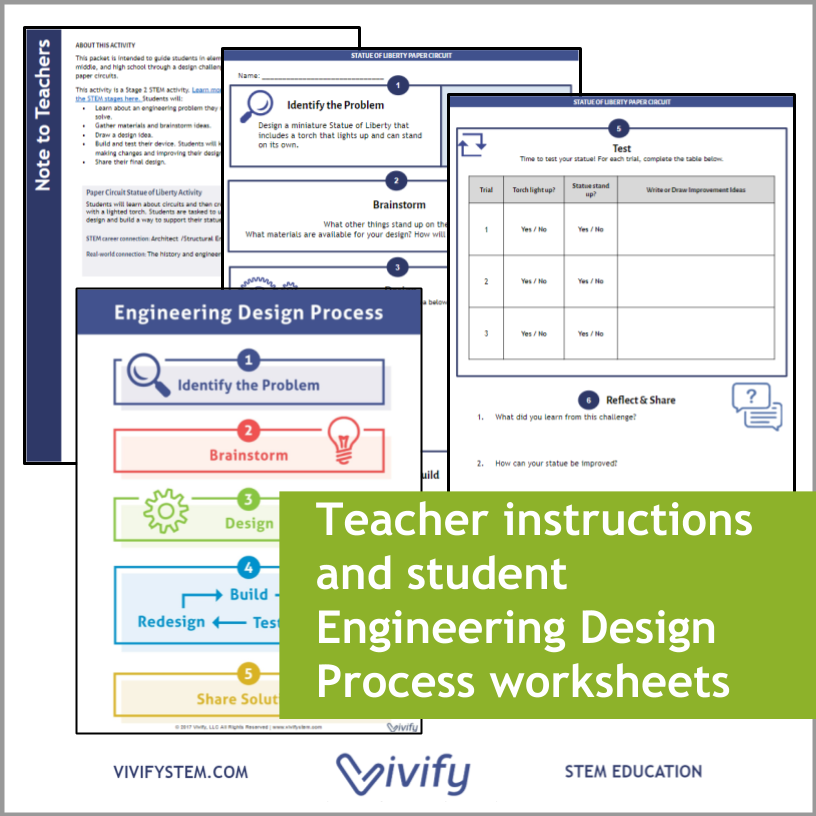Space Capsule Heat Shield Design Challenge | Middle School Engineering Our Cosmos
Inspired by the true story of NASA heat shield engineer Molly White, whose work on Orion’s thermal protection system is helping to safeguard the astronauts of tomorrow, this STEM unit blends engineering practices and physical science in an engaging design challenge. Drawing from NASA’s Orion mission, students design and build a heat shield to minimize the transfer of thermal energy during reentry to Earth’s atmosphere. Through this engineering design challenge, students explore and apply key science concepts including thermal energy transfer, insulation, and material properties as well as investigate real-world heat shield technologies and STEM careers. The unit also includes a developing a mission report to reflect on and present design ideas.
Engineering Our Cosmos Storyline (Adaptable for Grades 6 - 8): Humanity has long looked to the stars with wonder. Now, we stand at the dawn of a new era, where engineers will lead the way to other worlds. Your mission: design the tools, technologies, and systems that enable human exploration and survival beyond Earth. Each challenge brings us closer to life among the stars—and drives innovations that improve life here on Earth. It’s time to start Engineering Our Cosmos!
A Mission Beyond Earth, To The Moon: In this unit, students will learn about NASA engineer, Molly White, a heat shield engineer working on NASA’s Orion spacecraft at the Johnson Space Center. Molly’s work on Orion is helping pave the way for future missions at NASA. Her efforts are making space exploration safer, smarter, and more sustainable for the next generation of explorers.
Engineering Learning Goals in this unit include:
Real-World Connections: Recognize that NASA is designing a heat shield for the Orion spacecraft to help humans landing on Mars, identify that weight is a limitation in space travel, and understand the role of material scientists in heat shield design.
Making: Use common materials to build a heat shield and use knowledge of material properties to build a heat shield.
Habits of Mind: Define the criteria and constraints of an engineering problem, use data to inform design decisions, and evaluate design performance and identify ways to improve.
Science: Understand that heat transfers to areas of less heat, recognize that insulators slow the transfer of heat, and develop an investigation to identify how materials slow the transfer of heat in the material.
Technology: Identify how engineers have designed and tested different solutions for a heat shield, compare NASA’s ablative and inflatable heat shield ideas, and ompare features of their heat shield design to a real one.
Math: Calculate temperature differences, collect data in a data table, and graph data.
Included in this product:
Aligned to: NGSS, TEKS, and ITEEA Standards
Complete Teacher Guide following the engineering design process
Materials list and activity suggestions
Editable teaching slides
Editable student handouts for each phase of the design process, including science background, STEM career connection, information on Molly White, and more!
Mission report and badges
Recommended Supplies
Student handouts
Masking tape
Scissors
Heat source such as hair dryer
(Optional) Thermometer
Allow students to have access to all available materials for the heat shield such as:
Foil
Cardstock/index cards
Construction paper
Newspaper
Cotton balls
Cardboard
Styrofoam
Bubble Wrap
Foam
2021 Science TEKS Standards Alignment (Texas)
Practices: 1A/B/D/E/F/G, 2A/C/D, 3A/B, 4A
Content: 6.1A/B/C/D, 6.2C/D, 6.4A/C, 6.6A, 6.7A, 6.9A, 7.7A, 7.8A
